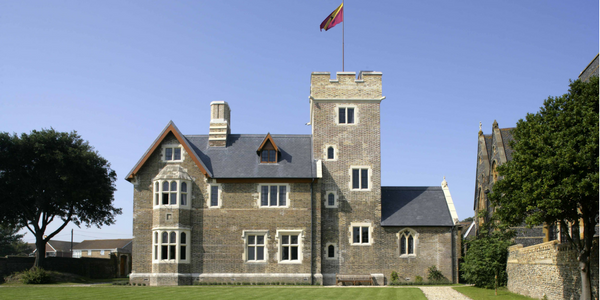 The restoration of The Grange in Ramsgate lasted from January 2004 to May 2006
The restoration of The Grange in Ramsgate lasted from January 2004 to May 2006
Restoring A W Pugin’s former family home The Grange was one of my most engrossing projects for Landmark (and I realise by now I’m nearing my 40th project completion!). The scheme we undertook to restore The Grange to a form that Pugin would have recognised in the late 1840s led to archives and processes of fascinating richness and intricacy. Just about every aspect of the interiors was poured over and debated in detail. It was the depth of documentary evidence as well as the physical evidence that convinced us we could take a fully restorationist approach to the interiors (something which is unusual for Landmark).
First and foremost were Pugin’s own letters, many written each day in his hurried, abbreviated hand, especially those to his decorator J. G. Crace in the RIBA archive.

‘Dear Sir, I send you the inscriptions I want done on Paper strips that I may paste them up on my bookcases….’ Pugin also gives the script and instructions on colour (red border and initials, black lettering, ‘dead white ground, rather warm.) We used this letter to recreate the cornice on the fitted bookshelves in Pugin’s library at The Grange, where he drew many of the designs for the Palace of Westminster in the 1840s.
Here are the finished shelves, their form also built using shadows found beneath later wallpaper:
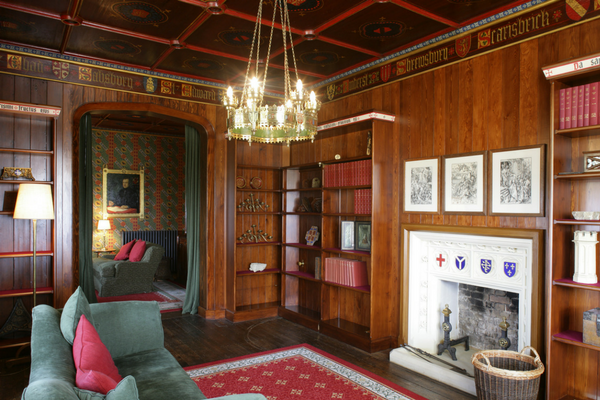
Then there was the thrill of huge folders arriving up from the stacks of the V & A, to yield beautifully coloured wallpaper and carpet designs , often annotated in pencil in that same small, crabbed handwriting:
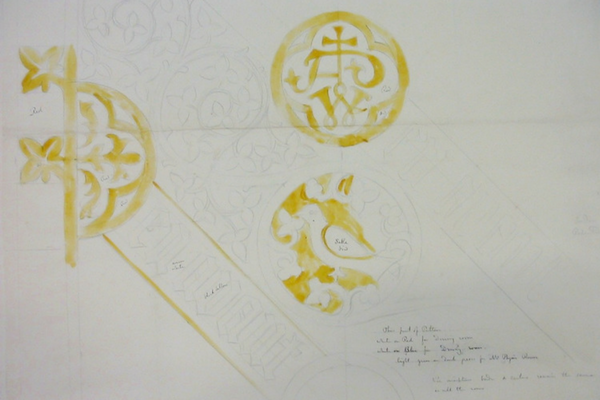
Here Pugin is refining his design for the striking diagonal wallpaper created specially for The Grange, using his family motto, ‘En Avant’ (‘forward’), a monogram of his initials (AWP) and the family emblem of a black martlet – a little bird that never rests.
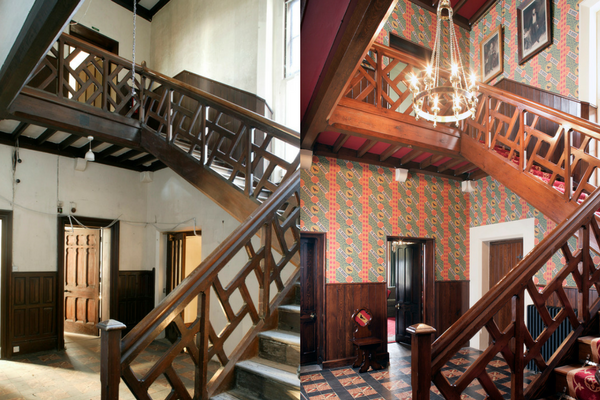
The hallway at The Grange before restoration, and as it looks now, brightened by the reproduced En Avant wallpaper just as it was in Pugin’s day
Such documentary sources were brought vividly to life when we slowly unpicked the building itself, finding survivals of the actual wallpapers behind skirting boards and door frames. And then came the process of reproducing the wallpapers, working with Cole & Son who still had 19th-century pattern books for the same designs (though we had to remake the blocks, suspecting that Pugin had destroyed them to prevent others using his personal design).
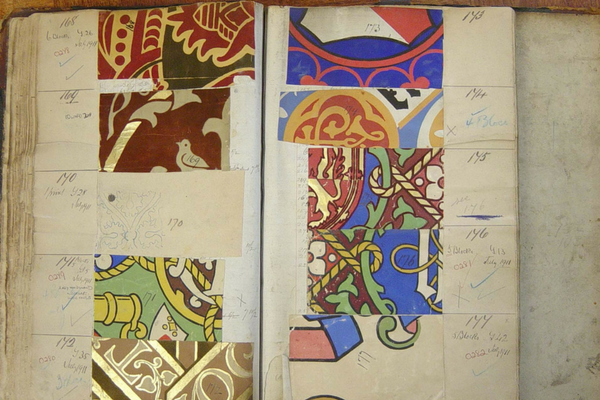 A 19th-century pattern book owned by wallpaper manufacturers, Cole & Son Ltd , held a scrap of blue En Avant paper. Later in the restoration, we found large survivals beneath panelling
A 19th-century pattern book owned by wallpaper manufacturers, Cole & Son Ltd , held a scrap of blue En Avant paper. Later in the restoration, we found large survivals beneath panelling
Interesting too was insight into the crucial role Pugin’s craftsmen played in translating his prolific, obsessive squiggles into the glorious finished interiors we see today. The inspiration was his, but truly the execution was theirs. For example, brass door handles and escutcheons (below) were reproduced by Hardman & Co, the same Birmingham firm who worked with Pugin, from a single surviving original. Extensive archives also survive for the metalwork and these enabled us to reproduce the enamelled metal shields Pugin used to decorate his fireplaces.
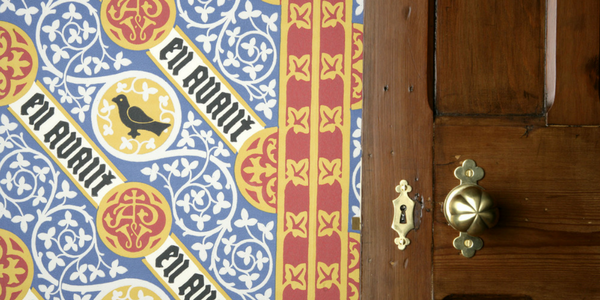 The blue colourway of Pugin's wallpaper. "En avant" ("forward") was his family motto. The door knob and escutcheon were also designed by Pugin
The blue colourway of Pugin's wallpaper. "En avant" ("forward") was his family motto. The door knob and escutcheon were also designed by Pugin
But my best find of all in the archives was the journal of Pugin’s third wife Jane, a copy of which I found in the House of Lords Record Office (while actually researching door knobs). Jane’s account of this restless genius’s final years and the poignancy of her part in nursing him cannot fail to move, and editing her journal for publication was another unanticipated pleasure of this most memorable restoration. (Dearest Augustus & I: The Journal of Jane Pugin, edited by Caroline Stanford, Spire Books, 2004).